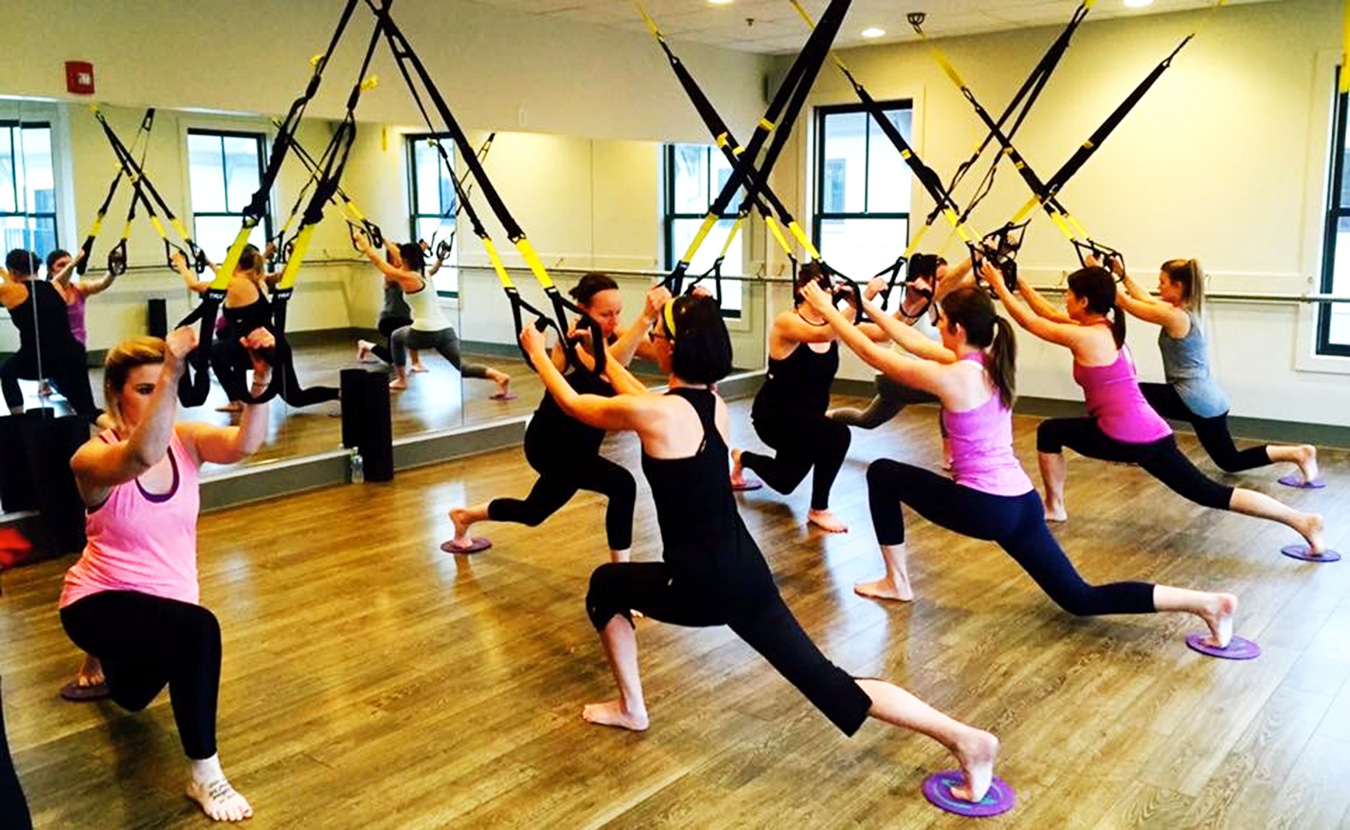Exercise — you know you should be doing it, but CrossFit is too intimidating, running makes you want to throw up, and group classes bring back memories of high-top Reeboks and Spandex shorts. Fear not, gentle out-of-shape reader. You don’t have to wear yourself out to be healthy. In fact, the American Heart Association recommends 150 minutes of moderate exercise per week, or just 30 minutes a day for five days a week, to improve cardiovascular health. That means anything that gets your heart pumping 110 to 140 beats per minute will get the job done. So whether you like to hit the gym, get outdoors, or work out at home, it’s not hard to find something that works for you and gets you moving!
Want to feel better and improve your quality of movement in both exercise and everyday life? Try classes that focus on balance, mobility, and recovery — important elements of fitness that aren’t often prioritized. Also known as functional fitness, these types of exercises strengthen your body for daily activities — such as bending, lifting, and twisting — and can help prevent injuries associated with those movements. “Functional fitness applies to everyone — the elite athlete, the weekend warrior, and the aging adult,” says Suzy Yeagley, owner of Bloomington Body Bar. “No matter what your level is, in order to be at your best, you must connect the mind with the body, breathe well, and move properly.”

Bodyweight training uses what you already have — your own body — to provide resistance and increase strength. | Photo courtesy of Bloomington Body Bar
If you’re more into feeling the burn, there’s no shortage of ways to help you work up a sweat. Good old-fashioned strength training is still going strong (no pun intended!), in part because it’s one of the main components of a complete exercise program — along with aerobic exercise and flexibility. But building strength doesn’t just mean pumping iron. You don’t need any equipment for bodyweight training — planks, burpees, squat jumps, and other exercises use what you’ve already got to provide resistance and increase strength. Google, YouTube, and Pinterest are great resources for finding a wealth of moves and workouts to choose from.
Suspension trainers, such as TRX, use gravity to add more challenge to bodyweight training. Developed by a Navy SEAL, the equipment consists of two straps anchored to a fixed point (ceiling, door, even a tree branch). By placing your hands or feet in the handles, you can perform hundreds of exercises, adjusting the angle of your body to make the work harder. Because suspension training develops strength, balance, flexibility, and core strength, you’ll also improve your functional fitness — bonus!

High-intensity interval training can be used with any number of fitness options. | Photo courtesy of Pexels
Are you trying to make the most out of your 30 minutes of daily exercise? High-intensity interval training (HIIT) or Tabata might fit the bill. HIIT workouts alternate short bursts of maximal cardio exercise with periods of recovery, resulting in an increased calorie burn. It takes only a few rounds of work to get the same benefits as a longer, steady-state exercise routine, so you can finish in as few as 20 minutes. Similarly, Tabata workouts consist of 20 seconds of intense exercise followed by ten seconds of rest, repeated eight times for a four-minute cycle. Your Tabata workout can be as short as four minutes, or you could stack a few cycles and go as long as 30 minutes, depending on your fitness level. Almost any kind of exercise — walking, running, cycling, swimming, rowing, or group fitness, for example — can be part of an interval program for any level of exerciser. You can find plenty of interval workouts online, but be sure to check with your doctor to make sure this type of intense exercise is right for you.
If you like your exercise a little more mindful, you’re not alone. An increasing percentage of Americans choose yoga for a mind-body practice, according to a survey conducted by the National Institutes of Health, and the trend shows no sign of slowing down. And if you think yoga is boring, check out an ever-growing variety of ways to get into downward dog. Guys who don’t think they’re flexible enough for yoga postures can try Broga, an energetic, strength-building practice that is well-suited for tight hamstrings. Love the great outdoors? Standup-paddleboard yoga moves asanas off the mat and onto a 10- to 12-foot-long board on a body of water, adding a core challenge while combating the motion of the waves. Live out your circus dreams with aerial yoga, which uses a suspended, soft fabric hammock to cradle the body and provide support as you move through poses in midair. Or go full Cirque du Soleil with Acroyoga, which combines yoga and acrobatic work with a partner to create gravity-defying poses. Hip Hop Yoga (great playlists), Brew-ga (yoga plus craft beer), Snowga (yes, out in the snow), and Rage Yoga (where profanity is encouraged, as evidenced by their tagline: “becoming zen as f***”) are all out there — so get up and find your niche!

Standup-paddleboard yoga uses core strength to keep you balanced on the surface of a body of water. | Photo courtesy of widiwici, Creative Commons
Rest and recovery are also vital components of a fitness regimen. Changes in the body occur following a workout, not during it, according to ACE certified personal trainer Pete McCall, so make sure to include a little down time to recharge. After a workout, fatigued muscles benefit from simple stretching or using a foam roller to release myofascial tissue (the tissue that supports and protects muscles and bones) and improve circulation.

The body changes after your workout, so don’t forget to stretch or use a foam roller. | Photo courtesy of Phil Gradwell, Creative Commons
No matter what type of exercise you choose, you’re going to do something beneficial for your health. In a recent New York Times article, IU School of Medicine professor Aaron E. Carroll outlines the positive effects of exercise on conditions ranging from rheumatoid arthritis to diabetes to Parkinson’s disease. Margie Kobow, healthy hearts and active lives program director at the Monroe County YMCA Southeast, sees these results every day working with older adults. “Exercise has proven over and over to be the best medicine when it comes to rehabilitation from an acute or chronic condition,” she says.
One last caveat: With new exercise formats and techniques popping up every day, it’s worthwhile to find out if the instructor leading your workout or weight-loss program is certified by an accredited program (American College of Sports Medicine, American Council on Exercise, or others in the National Commission for Certifying Agencies, for example). Most major clubs and fitness facilities require instructors to have a national certification — this ensures that the instructor has studied extensively, passed an exam, and is able to provide students with classes or programs based on their knowledge of anatomy, physiology, and research. Certifying organizations also require instructors to complete continuing education on a regular basis, so you can be sure that a certified instructor is aware of the most up-to-date exercise science.
So, with options like these — no more excuses. Get out there and exercise!


